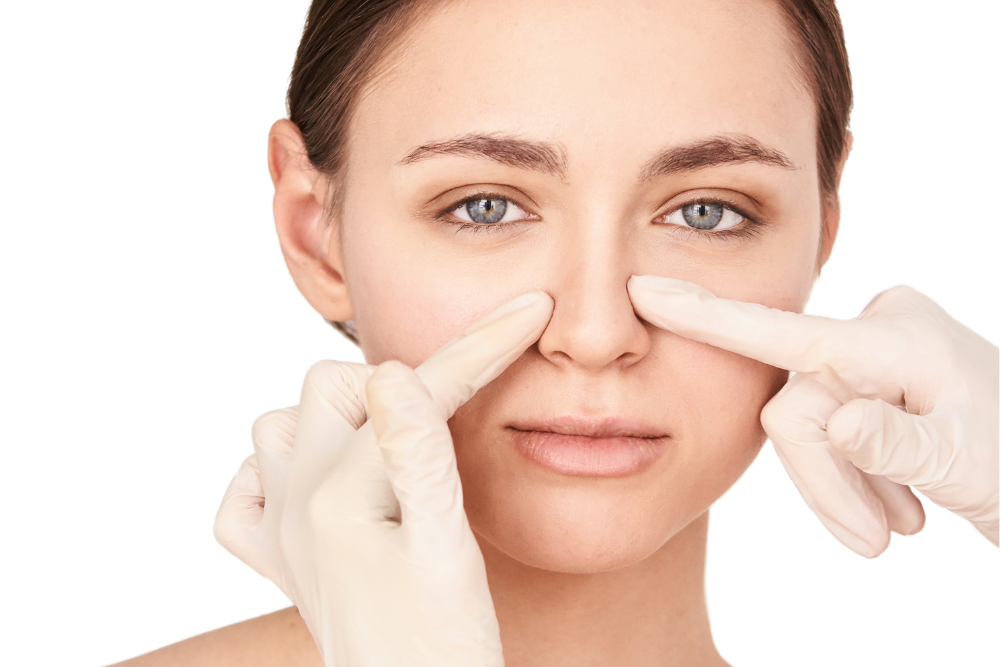According to the American Society of Plastic Surgeons, nose reshaping—or rhinoplasty—is the most popular cosmetic procedure. And with good reason.
A rhinoplasty can help you achieve the nose you’ve always dreamed of- a straighter bridge or a smaller tip. Here are a few imperfections that rhinoplasty in West Hills can fix.
Understanding the Anatomy of the Nose
The nose is made of three components: bone, cartilage, and tissue.
The nasal bones from the top of the nasal bridge connect to the frontal bone, which forms the forehead. On the lower two-thirds of the nose, several pieces of cartilage help shape the middle and tip of the nose. The nostrils are soft tissues that connect to the interior and exterior cartilage.
Regarding the interior of the nose, it’s mostly tissue and cartilage. However, the nasal septum—which divides the two airways—is a combination of bone and cartilage that connects to the nasal bone to form the bridge.
Each of these parts contributes to the nose’s overall appearance. For example, excess tissue in the nostrils can widen the nose, while a crooked nasal bone can affect the bridge. Likewise, displaced or excess cartilage can affect the lower part of the nose and tip.
Since the nose is a central facial feature, even something as minor as reducing the cartilage can transform the entire face.
Imperfection #1: Deviated Septum
A deviated septum occurs when the nasal wall is off-center. Not only can this affect the shape of the nose bridge, but it can also block one or both nasal passageways and limit breathing capabilities.
The best solution for a deviated septum is a surgery called septoplasty. The rhinoplasty specialist straightens the bone and cartilage in the nasal septum to open both nasal passages during this procedure.
While not the same as a rhinoplasty, an experienced plastic surgeon can combine a septoplasty with a rhinoplasty. The resulting procedure called a septorhinoplasty, addresses functional and aesthetic needs.
Imperfection #2: Wide Nasal Bridge
The nasal bridge is the upper part of the nose that sits between the eyes. Some patients feel that the nasal bone in that area is too broad compared to the rest of their face, causing their features to appear off balance.
The repair process is often complex since the nasal bridge is made of bone—rather than just cartilage and tissue. Nevertheless, an experienced nose job surgeon can handle a wide nose rhinoplasty by breaking and narrowing the bone.
Imperfection #3: Bulbous Nasal Tip
Bulbous nasal tips refer to nose tips that are wide, excessively round, or bulky. Causes of bulbous tips vary. Some people have misshapen cartilage around the tip of the nose, resulting in an overly rounded—or even boxy—appearance, while others have a thick layer of tissue.
No matter the cause, a rhinoplasty in West Hills can help with both bulbous tips. The exact approach to reducing a bulbous nasal tip varies by patient, considering it can occur for various reasons. For example, the rhinoplasty surgeon may implement cartilage grafting or trimming to reshape the tip.
Imperfection #4: Long Nose
A patient with a long nose may feel their nose’s length is disproportionately sized compared to the rest of their face. This imbalance often occurs due to excess cartilage on the columella or the tissue at the bottom of the septum that divides the nasal passageways.
A rhinoplasty can help shorten the nose by shaving off that excess cartilage. Patients may also request a nasal tip or nostril repair to shrink the nose’s size.
Imperfection #5: Hump on the Nasal Bridge
Sometimes the nasal bridge doesn’t form a straight line. An uneven lump of bone or cartilage along the nasal bridge can cause an unwanted profile and even a hooked nose.
This is one of the common reasons people seek a rhinoplasty, and a nose job surgeon can easily take care of a nasal bridge hump. The exact approach depends on how big the hump is and whether it’s mostly bone or cartilage. Sometimes, a minimally invasive technique—like shaving off excess cartilage—is ideal. If the patient has a more extreme hump and needs additional nose reconstruction, an open rhinoplasty may be more appropriate to remove a portion of the nasal bridge bone.
Imperfection #6: Crooked Nose
A crooked nose is a common by-product of facial trauma, a deviated septum, and can occur naturally. In the case of a deviated septum, a rhinoplasty surgeon performs a septorhinoplasty to correct the exterior of the crooked nose and a septoplasty to straighten the interior septum.
A patient with a crooked nose from facial trauma cannot qualify for a rhinoplasty until the nose has healed from the injury—usually after several weeks. No matter the cause, a rhinoplasty can help straighten a crooked nose. Sometimes, the rhinoplasty surgeon may need to fracture the nasal bridge and readjust it—like with a nasal hump—or shave down extra bone and cartilage to achieve the desired results.
Imperfection #7: Pinched Nostrils
Pinched nostrils occur when the cartilage in the tip becomes so weak that it collapses, causing the nostrils to take on a pinched appearance. Not only does this look unnatural, but it can affect a patient’s ability to breathe correctly.
One common cause of pinched nostrils or a pinched tip is a prior rhinoplasty that removed too much cartilage. That said, some patients have naturally pinched nostrils.
A rhinoplasty—or revision rhinoplasty in the case of returning patients—can add support to the nasal tip through cartilage grafting. Revision rhinoplasty widens the nostrils to facilitate easier breathing and boost the patient’s confidence.
Imperfection #8: Asymmetrical Nose
An asymmetrical nose can refer to many things: a deviated septum, a crooked nose, uneven nostrils, or an off-center tip. All these things can affect the nose’s symmetry—and, therefore, the overall symmetry or balance of the face.
A rhinoplasty surgeon in West Hills can fix any type of asymmetry. Depending on the severity of the issue, the nasal reconstruction surgeon will choose between open and closed rhinoplasty techniques.
Making the Decision: Is Rhinoplasty Right for You?
If you struggle with self-esteem or breathing issues due to any of the above-mentioned concerns, a rhinoplasty could be just what you need. However, there are some things to consider before diving in.
First, rhinoplasty in West Hills is a surgical procedure that involves anesthesia and an extensive recovery time. Patients typically need a few weeks for bruising and swelling to go down. After that, results take time to develop. Most rhinoplasty patients notice the final results around the one-year mark after their procedure.
Another consideration is your health. Everyone is not a good candidate for a rhinoplasty. Therefore, it’s critical to discuss your medical history with a qualified board-certified rhinoplasty surgeon: underlying conditions and certain lifestyle choices like smoking put patients at greater risk of surgical complications.
Finally, it’s essential to have realistic expectations. A rhinoplasty can completely transform your face, but not every procedure creates dramatic results. Some rhinoplasties—especially minimally invasive options—make subtle changes to enhance the face’s symmetry.
To better understand what to expect and what type of rhinoplasty is right for you, schedule a consultation with an experienced, board-certified rhinoplasty surgeon.
Conclusion
Rhinoplasty in West Hills is one of the most popular cosmetic procedures for a reason—it fixes many functional and cosmetic nose imperfections.
Talk with a board-certified rhinoplasty specialist today if you’re ready to increase your self-confidence and transform your appearance.

